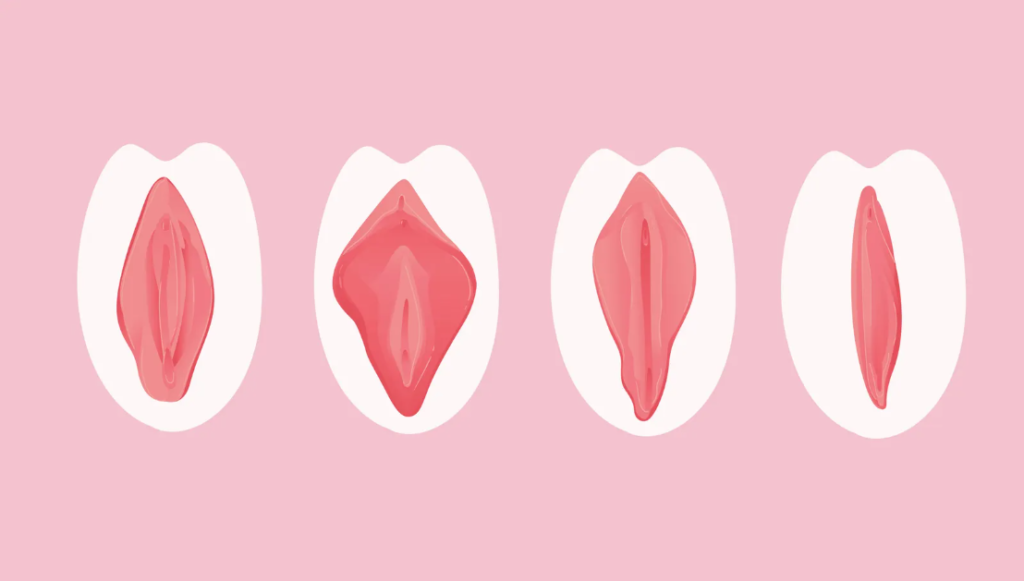
Introduction
The vagina, often shrouded in secrecy and misconception, is a vital part of the female anatomy. It plays a multifaceted role in reproduction, sexual pleasure, and overall health. Yet, due to societal taboos and misinformation, many individuals lack basic knowledge about this crucial organ. This comprehensive guide aims to empower you with the information you deserve, fostering a healthy relationship with your vagina.
Beyond the Basics: Delving into Anatomy and Physiology
While commonly used interchangeably with the vulva, the vagina is a distinct structure. The vulva, the external region of your genitals, encompasses the labia majora, labia minora, clitoris, and urethral and vaginal openings. The vagina itself is a muscular canal that connects the vulva to the cervix, the lower section of the uterus. Lined with a mucous membrane, it plays a central role in several key functions: Try GlucoTrust for Blood sugar management and weight loss.

- Menstruation: During your menstrual cycle, the lining of the uterus sheds and exits the body through the cervix and vagina, resulting in menstrual bleeding.
- Sexual intercourse: The vagina serves as the passageway for sexual intercourse. During arousal, the vagina lubricates and expands to accommodate penetration.
- Childbirth: During pregnancy, the fetus develops within the uterus. When labor begins, the cervix dilates, and the baby passes through the vagina during childbirth.
More than Muscles: The Microbiome and Self-Cleaning Mechanisms
The vagina is not just a hollow tube; it’s a dynamic ecosystem teeming with microorganisms. Lactobacilli, the dominant “good bacteria,” produce lactic acid, maintaining a slightly acidic pH level (around 3.8-4.5). This acidic environment discourages the growth of harmful bacteria and yeast, preventing infections. This self-cleaning system highlights the importance of not using douches or harsh soaps, as they can disrupt the delicate balance of the vaginal microbiome.
Embrace Your Uniqueness: Understanding Variations and Appearance

The vagina, like other body parts, exhibits a wide range of healthy variations in size, shape, and color. The average depth ranges from 2 to 4 inches, and it can stretch and contract depending on arousal and other factors. The inner and outer labia also come in diverse shapes and sizes, with no single “normal” appearance. Comparing yourself to others is counterproductive and unnecessary. Remember, healthy comes in all shapes and sizes.
Beyond Biology: Exploring Sexual Function and Pleasure
While essential for reproduction, the vagina plays a crucial role in sexual pleasure. The inner walls contain a network of nerve endings, and stimulation can lead to arousal, orgasm, and overall sexual satisfaction. Understanding your anatomy and exploring what feels good for you is essential for a fulfilling sex life. Different individuals experience sexual pleasure differently, and there’s no single “right” way. Open and honest communication with your partner about your preferences is key to a healthy and enjoyable sexual experience. Try GlucoTrust for Blood sugar management and weight loss.
Breaking the Silence: Dispelling Common Myths and Misconceptions
Unfortunately, numerous myths and misinformation surround the vagina. Let’s address some of the most common ones:
- Myth: The vagina is a bottomless pit.
- Fact: The vagina is a muscular canal with an average depth, and while it can stretch during arousal, it has limitations.
- Myth: You need to douche to maintain vaginal hygiene.
- Fact: Douching disrupts the natural balance of bacteria, increasing the risk of infections. Gentle cleansing with water or a mild soap for the vulva is sufficient.
- Myth: A healthy vagina has no odor.
- Fact: A mild, musky odor is considered normal. However, any significant change in odor, accompanied by itching, burning, or unusual discharge, could indicate an infection and warrants a visit to a healthcare professional.
- Myth: Tampons get lost in the vagina.
- Fact: The vagina ends at the cervix, a small opening leading to the uterus. Tampons cannot travel beyond this point.
Building Healthy Habits: Practices for Optimal Vaginal Health

Taking charge of your vaginal health starts with developing healthy habits and fostering a positive relationship with your body. Here are some key practices:
- Become familiar with your vulva and vagina. Gently observe your external and internal anatomy in a mirror.
- Practice good hygiene. Wash your vulva daily with warm water and a mild, fragrance-free soap. Avoid douching, harsh soaps, and scented products.
- Wear breathable cotton underwear. This allows for better air circulation and reduces the risk of irritation.
- Listen to your body. Pay attention to any changes in discharge, odor, or discomfort. Changes in color, consistency, or smell, or the presence of itching, burning, or pain could indicate an infection and necessitate a visit to a healthcare provider.
- Schedule regular checkups. Maintaining
Building Healthy Habits: Practices for Optimal Vaginal Health
- Schedule regular checkups. Maintaining annual or biannual checkups with your healthcare provider is crucial for preventive care and early detection of any potential concerns. During these visits, you can discuss any questions or concerns you have openly and receive professional guidance.
Addressing Concerns and Seeking Help: When to See a Healthcare Provider
While the vagina is a self-cleaning and resilient organ, certain situations warrant seeking professional guidance. Here are some indications that it’s time to visit your healthcare provider:

- Changes in discharge: While some discharge is normal, any significant changes in color, consistency, or amount, particularly if accompanied by an unpleasant odor, could indicate an infection.
- Itching, burning, or pain: These symptoms can be caused by various factors, including infections, vulvovaginal atrophy (thinning of vaginal tissues due to hormonal changes), or allergic reactions.
- Unusual bleeding: Any irregular bleeding outside of your menstrual cycle, such as bleeding after menopause or intermenstrual bleeding, should be brought to the attention of your healthcare provider.
- Pain during intercourse: Painful intercourse can occur due to various reasons, including vaginal dryness, infections, or underlying medical conditions. Seeking professional evaluation is essential to identify the cause and find appropriate treatment options. Try GlucoTrust for Blood sugar management and weight loss.
Open Communication: Breaking Down Stigma and Fostering Understanding
Talking openly and honestly about your vagina with trusted friends, partners, and healthcare professionals is crucial. Normalizing conversations about vaginal health and debunking myths can empower individuals to embrace their bodies and seek help when needed. Remember, you are not alone. Many individuals experience similar concerns and anxieties surrounding this important part of their body. By fostering open communication, we can collectively dismantle the stigma and create a space for safe and informed discussions.
Cultivating a Positive Relationship: Self-Love and Body Acceptance

Developing a positive and respectful relationship with your vagina is essential for overall well-being. This involves:
- Embracing your unique anatomy. Appreciate and accept your body for what it is, regardless of societal ideals or unrealistic portrayals in media.
- Practicing self-care. Prioritize your physical and mental well-being through healthy habits, stress management techniques, and activities you enjoy.
- Celebrating sexual pleasure. Explore your body and what brings you pleasure in a safe and consensual manner.
- Challenging negative self-talk. Replace negative thoughts about your body with positive affirmations and self-compassion. Try GlucoTrust for Blood sugar management and weight loss.
By implementing these practices, you can cultivate a healthy and respectful relationship with your vagina, empowering you to make informed choices about your well-being and embrace your body with confidence.
This guide provides a comprehensive overview of vaginal health and wellness. However, it is not a substitute for professional medical advice. If you have any specific concerns or questions, please consult with a healthcare provider. Here are some additional resources that you may find helpful.
Remember, you deserve to have access to accurate and reliable information about your body. By fostering knowledge, self-acceptance, and open communication, we can create a world where everyone feels empowered to care for their vaginal health and celebrate the incredible strength and resilience of this vital part of ourselves.

